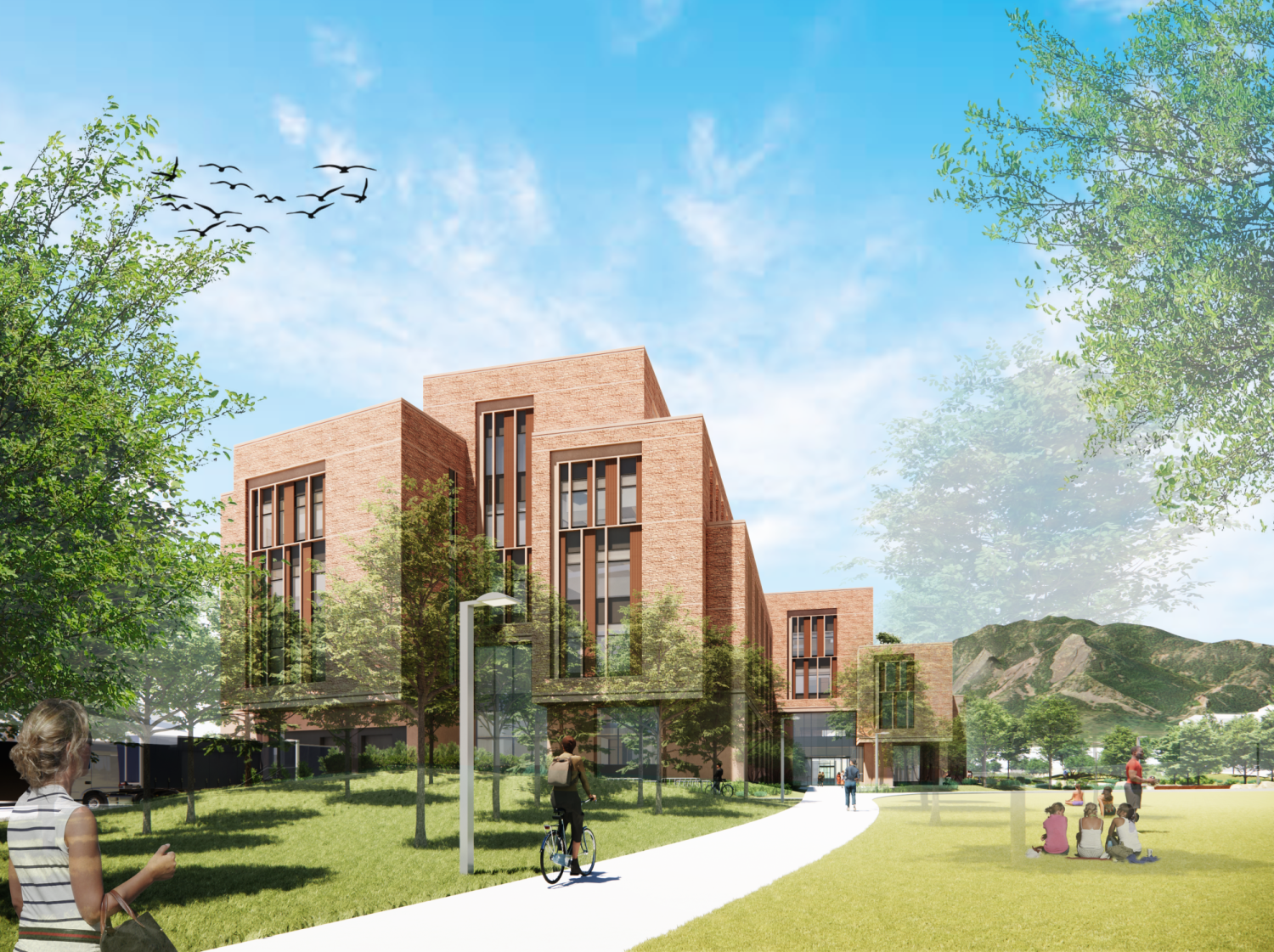
Rendering of the newly approved chemistry and applied mathematics facility. This is a draft rendering, subject to change.
The University of Colorado Board of Regents today approved plans to construct a new academic and research facility aimed at advancing research and educational opportunities in the fields of chemistry and applied mathematics. The proposed facility, spanning approximately 79,200 square feet, will be situated on the southeast side of Business Field on Main Campus.
The project, with an estimated cost of $175.43 million, will be funded primarily through a combination of campus cash reserves and debt.
Key features
- Shelled space for future specialized quantum research laboratories and offices.
- A nuclear magnetic resonance (NMR) spectroscopic core facility
- Modern classroom, office, meeting and research lab space
- A centrally scheduled 200-seat auditorium
- Student study areas
- Upper-level roof terrace
Academic goals
- The facility will provide modern research laboratories to promote the Department of Chemistry’s research mission, improve recruitment and strengthen retention. Foundational and interdisciplinary research fields include: analytical spectroscopy, environmental chemistry, experimental and theoretical physical/ biophysical chemistry, inorganic and materials chemistry, synthetic and physical organic/bio-organic chemistry.
- The facility will support the Department of Applied Mathematics’ efforts to continue to provide a major research presence in computational and physical/biological mathematics and the statistical sciences, enhancing the department’s effort to be a leading program of applied mathematics in the United States.
- The facility will provide shelled spaces to be completed in the future for the growing field of quantum-chemistry research.
- It will serve as a central hub for cutting-edge research, student learning outcomes and sustainable innovation, and it will foster interdisciplinary collaboration among students and researchers.
- It will provide training opportunities for students and researchers, fostering interdisciplinary collaboration and innovation.
Sustainability considerations
- The chemistry and applied math building seeks to be one of the most energy-efficient research buildings in the history of CU Boulder by achieving an Energy Use Intensity (EUI) of approximately 100 kilo British thermal units (kBtu) per gross square feet of the building (kBtu/ft2), according to current modeling.
- Construction will follow Buy Clean Colorado Act guidelines, using eligible materials that do not exceed the maximum allowable global warming potential limit in each construction category.
- The building’s mechanical system is being designed to use low-temperature hot water in preparation for the eventual connection to a future district energy loop heated by electricity, in support of the university’s overarching decarbonization plans.
- It will be the first building on campus to implement the use of cross-laminated timber (CLT) construction. The project will use CLT instead of concrete for the structure in non-research areas of the building. This will reduce the carbon impact of the structure.
What they’re saying
“The approval of the new chemistry and applied mathematics facility marks a significant milestone for our campus,” CU Boulder Chancellor Phil DiStefano said.
“This project underscores our commitment to advancing research and fostering interdisciplinary collaboration. It will not only provide state-of-the-art resources for our scholars but also pave the way for groundbreaking discoveries that will benefit both our campus community and society at large."
What’s next
Construction is slated to begin in October, with occupancy planned for late 2026/early 2027.
Vacated spaces within Cristol Chemistry & Biochemistry are anticipated to be assigned to the College of Media, Communications and Information (CMCI), while spaces vacated by Applied Mathematics within the Engineering Center will benefit the College of Engineering and Applied Science.



